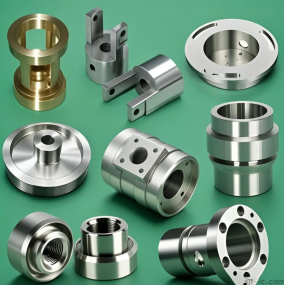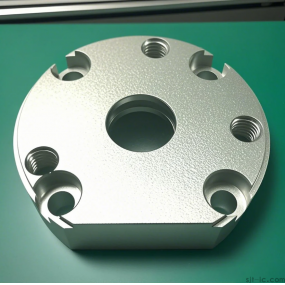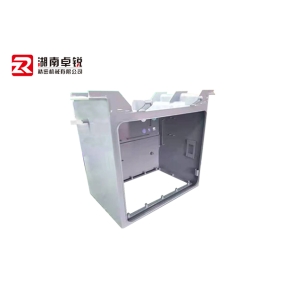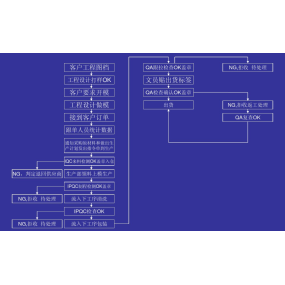The common feeding method in EMAR sheet metal factories, laser cutting, can meet customers' fast and precise requirements for cutting materials, while also improving the overall efficiency of Sheet Metal Processing. What is the principle of laser cutting like that? The laser is aimed at a small spot with a Z aperture of less than 0.1mm, allowing for strong power at the focal point exceeding 106w/cm2. At this point, the heat generated by the input of light (converted by solar energy) far exceeds the reflection surface, transmission, or spread of the material. The material quickly heats up to the humidity of the gasification environment and evaporates to produce pores.
Due to the relative linear movement of light and material, the aperture continues to produce a narrow slit with a total width (such as around 0.1mm). The cutting edge has little harm and there is basically no deformation of the workpiece. The laser cutting principle of sheet metal processing in EMAR sheet metal factories also includes assistance with cutting materials that are suitable for the material. When cutting steel, oxygen is used to assist in the exothermic reaction between the vapor and the molten metal material, and to chemically oxidize the material with air. At the same time, it helps to blow away the slag in the cutting seam. Cutting polypropylene and other plastics should be done using air compression, while cutting flammable materials such as cotton and paper should be done using rare gases. The assisting vapor entering the nozzle can also cool the focusing lens, avoiding dust from entering the lens holder and contaminating the lens, which can cause overheating of the lens. Most organic and inorganic compounds can be cut by laser.
In the metal material manufacturing industry, which accounts for a significant proportion of industrial manufacturing, many metal materials, regardless of their strength, can be cut without deformation (currently, the application of Z's excellent laser cutting system software can cut industrial grade steel with a thickness close to 20m). Naturally, for high transmittance materials such as gold, silver, copper, and aluminum alloy profiles, they are also good thermal conductors, making laser cutting very difficult or even impossible to cut (some difficult to cut materials can be cut using pulsed wave lasers because the extremely strong peak power of the pulse can greatly increase the material's absorption rate of light in an instant). Laser cutting has no burrs, wrinkles, high precision, and is better than low-temperature plasma cutting. For many mechanical and electrical engineering processing and manufacturing industries, the intelligent laser cutting system software with microcomputer program flow can easily cut workpieces of different shapes and specifications (workpiece engineering drawings can also be modified), and it is usually preferred over shear compression and compression molding processes; Although its production and processing speed is slower than that of the mold god, it does not consume molds, does not require mold maintenance, and saves time on mold replacement, thus saving production and processing costs and reducing production costs. Overall, it is more cost-effective economically.
On the other hand, from the perspective of how to integrate the mold into the design size and shape transformation of the workpiece, laser cutting can also fully leverage its advantages of precision and good reproducibility. As a preferred manufacturing method for stacked molds, it does not require high-end mold making and laser cutting operation costs are not too expensive, which can significantly reduce the cost of mold products. The additional benefit of laser cutting molds is that the cutting edge of the mold will create a shallow hard bottom layer (heat affected zone), which improves the wear resistance of the mold during operation. The non-contact characteristics of laser cutting give the saw blade the advantage of no stress during cutting and forming, thereby improving its service life.


 Spanish
Spanish Arabic
Arabic French
French Portuguese
Portuguese Belarusian
Belarusian Japanese
Japanese Russian
Russian Malay
Malay Icelandic
Icelandic Bulgarian
Bulgarian Azerbaijani
Azerbaijani Estonian
Estonian Irish
Irish Polish
Polish Persian
Persian Boolean
Boolean Danish
Danish German
German Filipino
Filipino Finnish
Finnish Korean
Korean Dutch
Dutch Galician
Galician Catalan
Catalan Czech
Czech Croatian
Croatian Latin
Latin Latvian
Latvian Romanian
Romanian Maltese
Maltese Macedonian
Macedonian Norwegian
Norwegian Swedish
Swedish Serbian
Serbian Slovak
Slovak Slovenian
Slovenian Swahili
Swahili Thai
Thai Turkish
Turkish Welsh
Welsh Urdu
Urdu Ukrainian
Ukrainian Greek
Greek Hungarian
Hungarian Italian
Italian Yiddish
Yiddish Indonesian
Indonesian Vietnamese
Vietnamese Haitian Creole
Haitian Creole Spanish Basque
Spanish Basque










